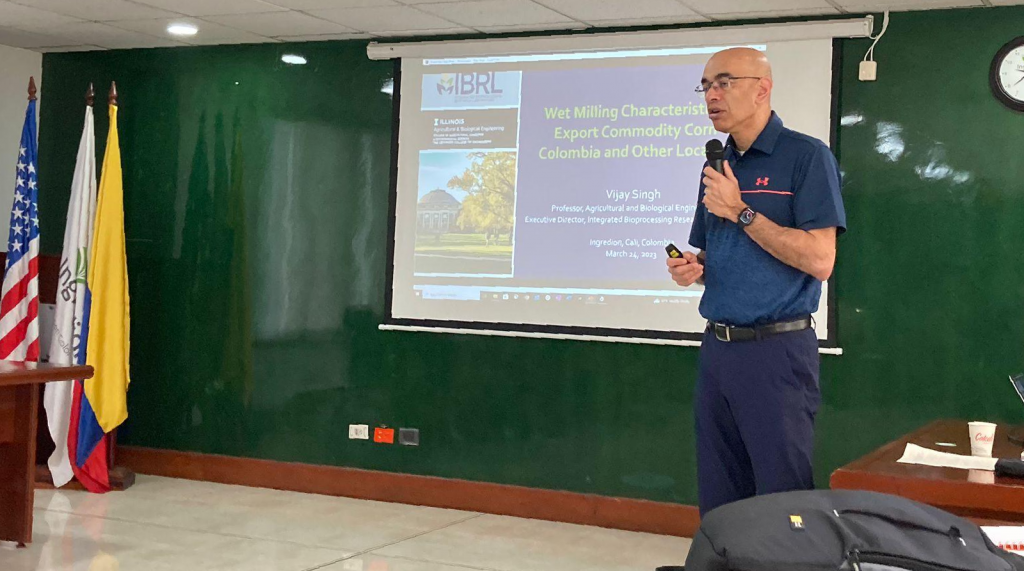Following the completion of the three-year industrial corn starch study developed by the U.S. Grains Council (USGC), the organization continues to present the results to industrial plants that played a role in the study.
Dr. Vijay Singh of the University of Illinois Urbana-Champaign, who conducted the study, along with USGC staff, recently traveled to Cali, Colombia, to meet with representatives from a leading industrial plant with the goal of strengthening that relationship while continuing discussions on potential collaboration opportunities to elevate future iterations of the research.
The results of the second year of the study were presented during the visit, showcasing how U.S. corn has more starch available for extraction than competitors, which can have a notable impact on profits in the wet milling industry.
“The operations personnel of the industrial plant agreed on the superiority of corn from the U.S. over South America in terms of starch extraction,” said Ana Ballesteros, USGC marketing director in Latin America. “However, they have been buying South American corn when the price is lower. With the recommendations given in terms of the adjustments to their operations to maximize the benefits of the superiority in starch extraction of U.S. corn, this plant may consider additional factors when calculating the cost difference when analyzing other options. Their willingness to do so and to continue engaging with a next step of this work led by the Council may result in savings for their operations.”
The industrial corn starch study was first developed by the Council in 2019 to examine and compare the extractable starch of U.S.-, Brazilian-, Argentinian- and Black Sea-origin corn. The results have shown that U.S. corn has three to four percent more extractable starch than other origins, leading to the potential for increased profits for wet millers that switch to U.S. corn.
In 2020, Singh was able to share the results of the study through virtual conferences with multiple companies that provided corn samples. Singh was then able to perform an audit of the wet milling facilities owned by a company in Egypt and provided feedback and training on how to increase starch yields from the corn processed in the facilities.
Moving forward, the Council will continue sharing the findings of the study, focusing on relationship building and finding new homes for U.S. corn by showcasing its superior benefits compared to corn of other origins.
“For the Council, this project has been key in identifying and highlighting a key advantage that sets U.S. corn apart on a global stage in a highly specialized industry,” said Alexander Grabois, USGC manager of global strategies and trade. “As we embark on the next steps of this project, we will be hosting a delegation of Egyptian starch plant executives at the ADF Starch Conference in Detmold, Germany, where Dr. Singh will present the results of the study. In May of this year, we will be hosting our second Starch Extractability and Wet Milling Conference, in Seoul, South Korea, welcoming nearly 50 international wet milling plant representatives from around the world. At this conference, we will discuss the results of this study in greater detail, while also speaking about the various processes and technical aspects to improve starch yields in the wet milling process.”
About The U.S. Grains Council
The U.S. Grains Council develops export markets for U.S. barley, corn, sorghum and related products including distiller’s dried grains with solubles (DDGS) and ethanol. With full-time presence in 28 locations, the Council operates programs in more than 50 countries and the European Union. The Council believes exports are vital to global economic development and to U.S. agriculture’s profitability. Detailed information about the Council and its programs is online at www.grains.org.

